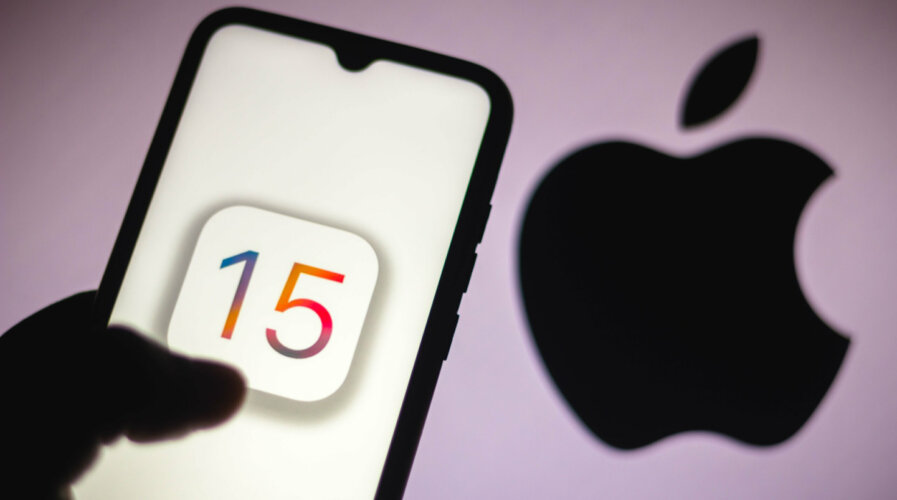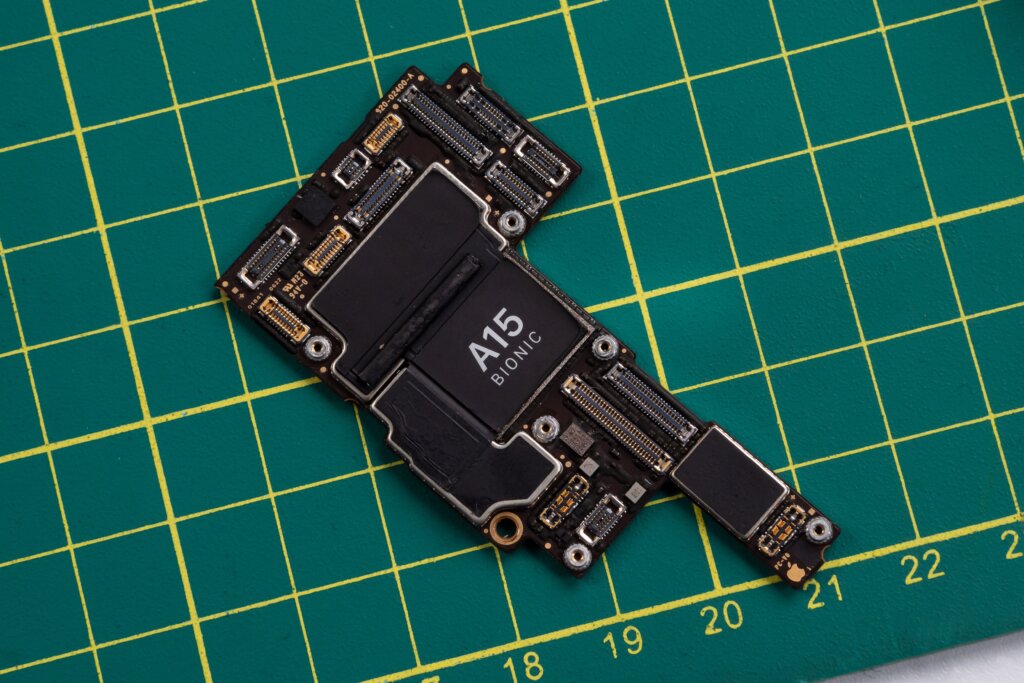
iPhone 15 leaks have been going around with its latest advancements in the A17 chip. (Source – Shutterstock)
A peek into the future: Apple’s A17 chip and iPhone 15 Pro leaks and updates
|
Getting your Trinity Audio player ready... |
- A17 chip leaks suggest 6-core GPU and 3nm tech for iPhone 15 Pro.
- iPhone 15 Pro to feature Wi-Fi 6E, enhanced Neural Engine, and potential LPDDR5x RAM. Release expected mid-September.
Based on recent leaks, Apple’s soon-to-be-released A17 chip for the iPhone 15 Pro and iPhone 15 Pro Max is expected to feature both a 6-core CPU and a 6-core GPU. These insider details come from Unknownz21. For comparison, the current A16 Bionic chip in the iPhone 14 Pro series has a 6-core CPU but only a 5-core GPU. With this upgrade, iPhone 15 Pro users can look forward to notably enhanced GPU capabilities.
The leaker points to the A17 chip clocking a top speed of 3.70 GHz, marginally higher than the A16’s 3.46 GHz.
Will iPhone 15 Pro see an upgrade, according to leaks?
The leaker, Unknownz21, also commented that the iPhone 15 Pro and iPhone 15 Pro Max models will likely maintain the 6GB RAM in the iPhone 14 Pro counterparts. While speculations have arisen about a potential 8GB RAM for the iPhone 15 Pro and the iPhone 15 Pro Max, Unknownz21 deems this as “unlikely”, although not impossible.
TSMC’s cutting-edge 3-nanometer (3nm) process will be employed to produce the A17 chip. This advanced process promises to outperform the A16 chip from the iPhone 14 Pro and iPhone 14 Pro Max in efficiency and performance.
The additional GPU core in the A17 could significantly enhance graphics capabilities in Apple’s upcoming flagship Pro iPhones. Moreover, the innovative 3nm process hints at accelerated CPU speeds and prolonged battery life when juxtaposed against the A16’s 4nm design. Predictions indicate potential CPU enhancements by 10 to 15% and power efficiency gains of up to 30%.
Due to the costly nature of the 3nm fabrication process, the A17 chip will be exclusive to the iPhone 15 Pro and iPhone 15 Pro Max. The standard iPhone 15 and iPhone 15 Plus are predicted to run on the familiar A16 chip in the high-end iPhone 14 Pro and iPhone 14 Pro Max phones.
Leaked Wi-Fi insights: Distinguishing Wi-Fi 6 and 6E
This is not Unknownz21’s maiden reveal about the iPhone 15. Early this year, the source disclosed the iPhone 15’s antenna structure details – suggesting that only the iPhone 15 Pro and iPhone 15 Pro Max will adopt the advanced Wi-Fi 6E standard, while the iPhone 15 and 15 Plus will stick with Wi-Fi 6.
One might wonder what the difference between the two networks actually is. Both Wi-Fi 6 and Wi-Fi 6E elevate wireless connectivity standards. However, they cater to diverse spectrums and scenarios. Wi-Fi 6, also recognized as 802.11ax, refines data transfer in the conventional 2.4 GHz and 5 GHz bands, optimizing tasks like online gaming or HD and 4K video streaming.
In contrast, Wi-Fi 6E leverages the expansive 6 GHz band, providing less clutter and increased data channels. This band’s attributes include minimal interference, reduced lag, and enhanced throughput.
Only a handful of Apple gadgets, like the newest iPad Pro models, Mac mini models, and the 14 and 16-inch MacBook Pro, currently support Wi-Fi 6E. The iPhone 14 series, however, remains limited to Wi-Fi 6 compatibility.
In a disclosure from April, Unknownz21 mentioned Apple’s decision to omit the speculated unified solid-state volume button for the iPhone 15 Pro and iPhone 15 Pro Max. Instead, traditional dual-button volume controls will feature on these devices.
Apple’s AI aspirations: What’s next for the Neural Engine?
Apple has heavily invested in AI and machine learning. Even though its efforts in the AI domain might not be as aggressive as some competitors, Apple has consistently integrated AI throughout its software and applications for years. The company’s dedication to its Neural Engine, responsible for machine learning functions, is evident in frequent feature updates.
The A16’s Neural Engine underwent minimal alterations. Maintaining its 16 cores, its performance saw a staggering 8% boost compared to the A15 version, likely attributed to an increased clock speed. This was somewhat underwhelming for many.

The Apple A15 Bionic chip used in the iPhone 13 series. (Source – Shutterstock)
The 3nm process’s expanded transistor allowance suggests that the Neural Engine might witness notable advancements, possibly in the form of additional cores or a redesigned core structure. It wouldn’t be surprising if it exceeds 20 trillion operations per second, though there’s debate on this metric’s effectiveness in gauging performance.
The A16 marked Apple’s transition to LPDDR5 RAM from the previous A15’s LPDDR4x. Rivals, such as the Snapdragon 8 Gen 2, employ LPDDR5x, offering about a third more bandwidth with reduced latency at equivalent power consumption.
Enhanced memory bandwidth benefits myriad applications, particularly power-hungry 3D games, which push both CPU and GPU to their limits. Apple may not always be an early adopter of memory tech, but it appreciates the advantages of rapid data transfer. Hence, the A17 might potentially feature LPDDR5x RAM – it’s a toss-up.
Apple’s iPhone 15 series is set for a likely debut on September 12, at a media event. Anticipate pre-orders to commence by September 15, with the lineup hitting the shelves by September 22.
READ MORE
- Safer Automation: How Sophic and Firmus Succeeded in Malaysia with MDEC’s Support
- Privilege granted, not gained: Intelligent authorization for enhanced infrastructure productivity
- Low-Code produces the Proof-of-Possibilities
- New Wearables Enable Staff to Work Faster and Safer
- Experts weigh in on Oracle’s departure from adland


